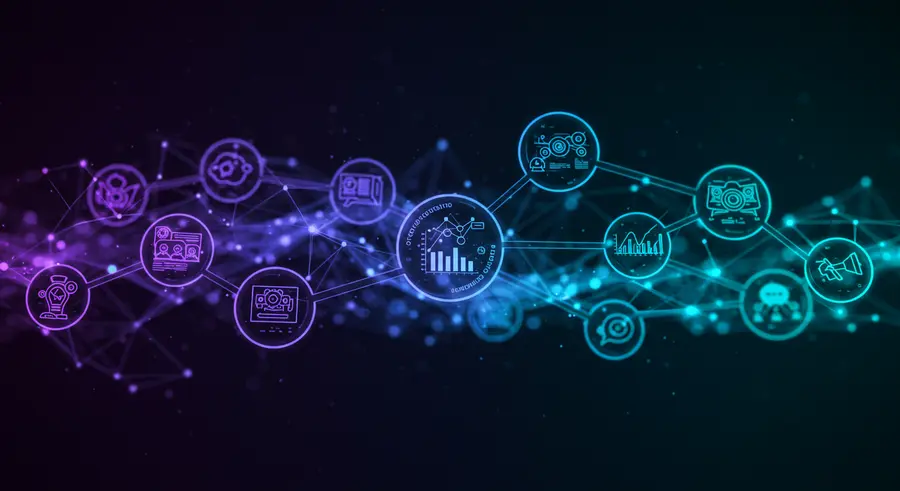Appearance
Welcome, eco-conscious developers and tech enthusiasts! 👋 In an era where digital consumption is soaring, it's crucial to consider the environmental impact of our online world. Today, we're diving deep into Sustainable Web Development – a movement dedicated to building eco-friendly and energy-efficient digital experiences.
🌱 Why Go Green in Web Development?
The internet, while seemingly intangible, has a significant carbon footprint. Data centers consume vast amounts of electricity, and inefficient code can lead to higher energy usage. By embracing sustainable web development practices, we can:
- Reduce Carbon Emissions: Minimize the energy required to host and access websites.
- Improve Performance: Eco-friendly practices often lead to faster, more efficient websites.
- Enhance User Experience: Optimized sites are not only greener but also provide a better experience for users.
- Align with Values: Demonstrate a commitment to environmental responsibility.
💡 Key Principles of Sustainable Web Development
Sustainable web development isn't just a trend; it's a holistic approach. Here are some core principles:
- Optimized Performance: Faster websites consume less energy. This means optimizing images, leveraging caching, and minifying code.
- Green Hosting: Choosing web hosting providers that power their servers with renewable energy sources. This is perhaps one of the most impactful changes you can make!
- Efficient Code: Writing clean, lean, and efficient code reduces processing power and data transfer.
- Content Delivery Networks (CDNs): Using CDNs to deliver content from servers geographically closer to users, reducing latency and energy consumption.
- Dark Mode Implementation: Darker interfaces generally consume less energy on OLED screens.
- Minimalist Design: Simplifying designs reduces the amount of data transferred and processed.
- Data Minimization: Only storing and transferring essential data.
🛠️ Practical Steps to Implement Sustainable Practices
Let's get practical! Here’s how you can start integrating sustainable practices into your web development workflow:
1. Image and Media Optimization 🖼️
Images and videos are often the heaviest elements on a webpage.
Compress Images: Use tools like TinyPNG or ImageOptim to reduce file sizes without significant loss in quality.
Next-Gen Formats: Opt for modern image formats like WebP or AVIF, which offer better compression.
Lazy Loading: Implement lazy loading for images and videos, so they only load when they enter the viewport.
html<img src="placeholder.jpg" data-src="actual-image.webp" alt="Description" loading="lazy">
2. Efficient Code and Assets 💻
Every line of code and every asset contributes to the overall load.
- Minify CSS, JavaScript, and HTML: Remove unnecessary characters (whitespace, comments) from your code.
- Bundle and Gzip: Combine multiple CSS/JS files into one and compress them for faster delivery.
- Reduce HTTP Requests: Fewer requests mean less data transfer. Combine small images into CSS sprites or use icon fonts.
3. Green Hosting Solutions 🌍
This is a fundamental step. Research hosting providers that use renewable energy. Look for certifications or public statements about their energy sources.

4. Semantic Web and Data Interoperability 🔗
While not directly about energy consumption, the Semantic Web (or Web 3.0) plays a role in making data more discoverable and interoperable. By structuring data meaningfully (using technologies like RDF and OWL), we can reduce the need for complex, energy-intensive data transformations and improve the efficiency of information retrieval. This ultimately leads to more streamlined and less resource-intensive applications. For a deeper dive into this, check out our article on Exploring the Semantic Web.
5. User Experience and Accessibility ♿
A well-designed, accessible website is often an efficient one. By focusing on clear navigation and intuitive interfaces, you can reduce the time users spend searching for information, thereby minimizing server requests.
6. Continuous Monitoring and Optimization 📊
Use tools like Google Lighthouse, EcoGrader, or Website Carbon Calculator to measure your website's environmental impact and identify areas for improvement. Regular audits can help maintain a sustainable digital presence.
🌟 The Future is Green!
Sustainable web development is a journey, not a destination. As technology evolves, so too will the methods for building greener websites. By consciously adopting these practices, we contribute to a more responsible and sustainable digital ecosystem. Let's build a web that's not only powerful and engaging but also kind to our planet! 💚
What are your thoughts on sustainable web development? Share your tips and experiences in the comments below! 👇